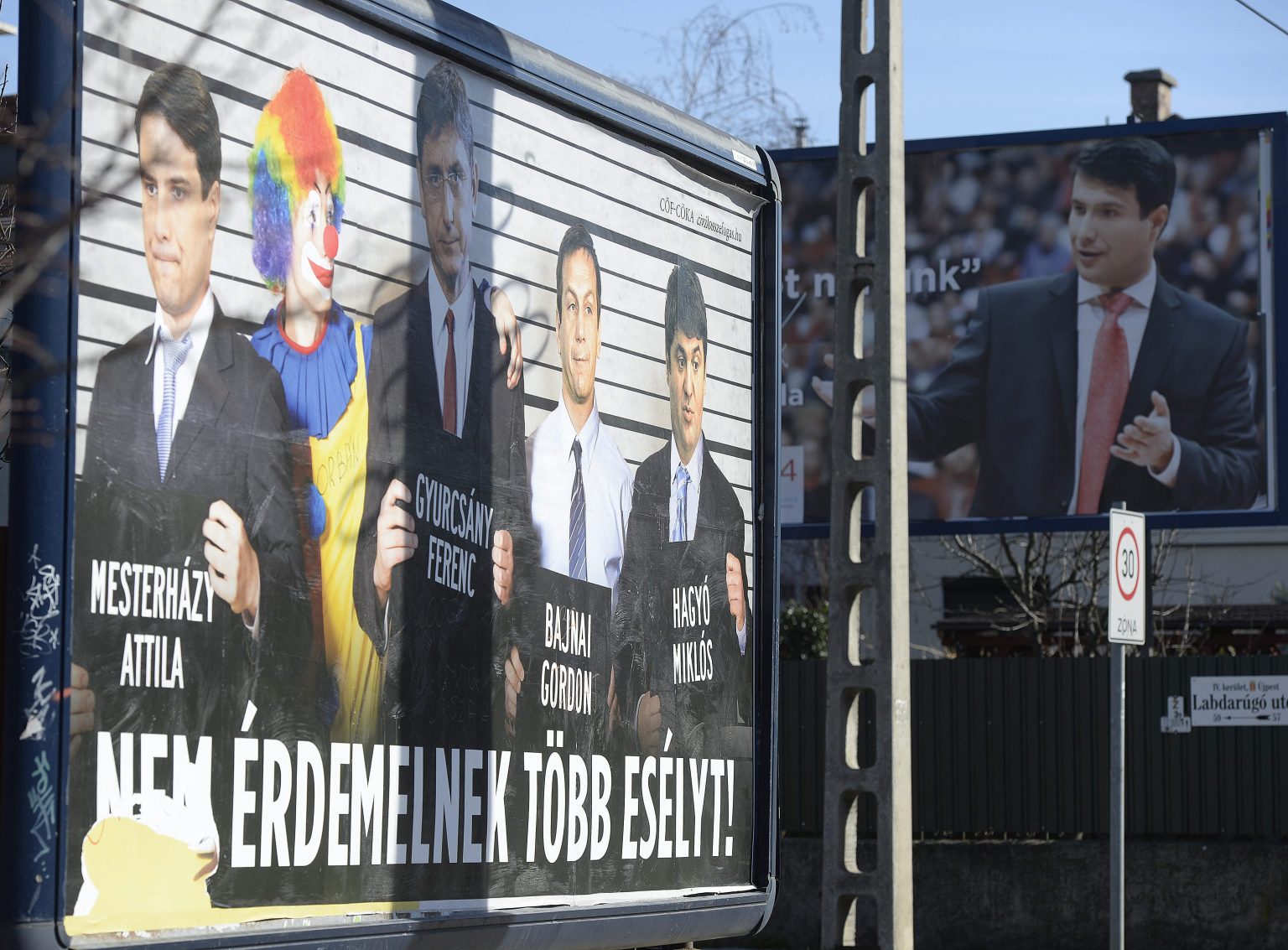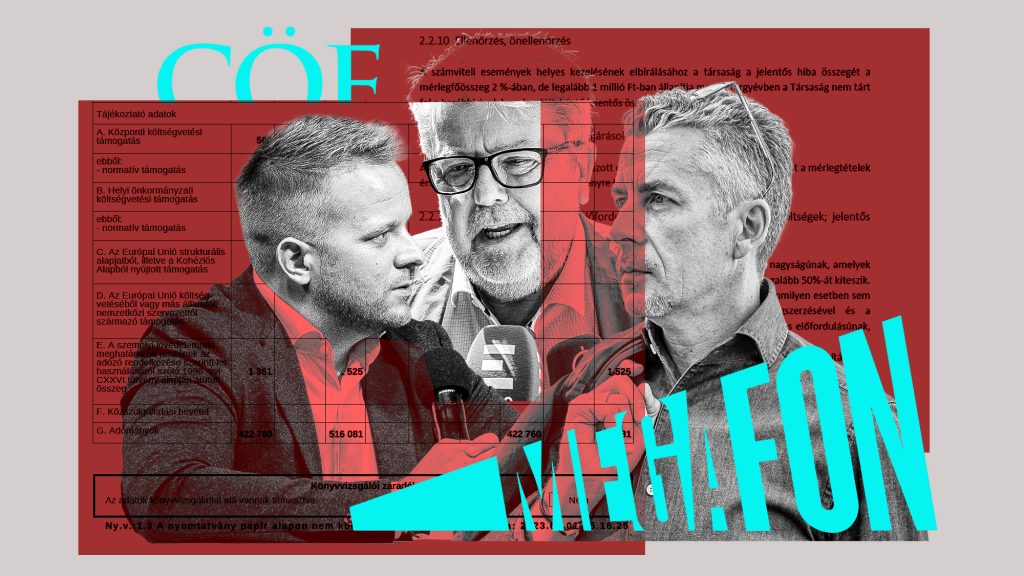The 2022 parliamentary election brought a larger victory to the Fidesz-KDNP alliance than ever before, receiving more than 3 million votes on their list (including votes from abroad) – a feat no political force had achieved since the regime change. In the months leading up to the election, the united opposition, according to some surveys, had levels of support similar to the government alliance. In light of this, their dismal results on the 3rd of April following a campaign full of mistakes were astonishing. After the government’s landslide victory, more and more information began to leak regarding the financial background of the opposition’s campaign, first from joint prime ministerial candidate Péter Márki-Zay, and by the end of the year, partly from intelligence reports, it became clear how much support had come to the “Mindenki Magyarországa Mozgalom” (Everyone’s Hungary Movement) and how much the government-critical propaganda sites had received, the cooperation of which we have also uncovered. Our conclusion was that a significant part of the funding for the opposition campaign had come from abroad, which was also unprecedented in the history of Hungary’s elections.

However, by that time, the NER (System of National Cooperation, colloquially used as an umbrella term for Fidesz-aligned political and economic elites) had come up with something that also hadn’t existed before, and apparently, no state body or authority has any issues with.
Last year’s election saw the establishment of a government propaganda network, the operational costs of which – according to our latest reports – are even less traceable than those of the opposition campaign. However, the scale of the funds involved is even larger than the 3-3.5 billion forints that the State Audit Office is seeking to charge opposition parties for, or the amounts received by Gergely Karácsony’s 99 Movement.
None of these organizations have disclosed their supporters or donors despite our request.
The propaganda machine symbiotically linked to NER began to take shape in the early 2010s, but while a decade ago investigative reports would attempt to trace amounts in the hundreds of millions, today several billion forints end up here annually from undisclosed sources.
CÖF and the billion-forint donations
CÖF is unavoidable in this regard, as it was this organisation that executed the first outsourced campaigns after 2010. The legal basis of this was created when the two-thirds Fidesz-KDNP majority had changed the rules of campaign financing without specifying the roles of foundations or non-profit organisations, thereby opening the way for certain elements of the campaign – such as the throngs of billboards targeting the opposition – to be outsourced by the government’s power centers. It is quite telling that the cost of the ‘clown’ campaign before the 2014 election was estimated by Magyar Narancs to be ‘only’ 250 million forints, while today, it is ten times that amount we can’t trace the origins of. Not even in the case of CÖF.

The reason for this is that in the court-submitted reports of the Civil Union Public Benefit Foundation (CÖKA), standing behind CÖF, which also organises the Fidesz-supporting Peace March (Békemenet), there is only one field to fill out regarding the amount of donations received by the organization in a given year. In other words, these operational sources remain invisible because the official reports contain no information about the donations’ origins, sometimes amounting up to hundreds of millions.
CÖF’s revenues have come from three main sources so far:
- Hidden donations, mainly from private individuals, from state-owned companies (such as electrical SP MVM)
- and the Hungarian Lottery,
- and from Fidesz’s Foundation for a Civic Hungary (SZPMA), which also organizes Fidesz’s annual meeting in Kötcse.
However, despite the hundreds of millions in public funds previously uncovered, private donations make up the majority of the support received by CÖF, along with some donations where the ‘sender’ is not specified.
However, a sum of nearly 770 million forints was labelled, with the majority (508 million forints) coming from state-owned MVM, and the rest, over 250 million forints, came largely from the Fidesz party foundation. We attempted to reach out to the foundation led by László Csizmadia, but we have not received a response to our inquiry about the private individuals who collectively support CÖF’s foundation with billions. This question is intriguing, as the CÖF-CÖKA receives an insignificant portion of the 1% tax designation from citizens. For instance, the foundation only collected 1.7 million forints this year, while Partizán, a popular government-critical media outlet, and human rights NGO Hungarian Civil Liberties Union received 191 and 37 million forints this way, respectively. Therefore, the most common form of supporting civil organizations has not yielded much success for the government-affiliated foundation.
In the chart below, we have aggregated CÖF’s annual donations. (Donations in 2017 were labelled in the reports to have come from “domestic companies” instead of private individuals, but as these sources are also untraceable, we have included them together with the private donations.) In the last two years, including the election year 2022, the amounts have increased significantly compared to previous years.
One of recent years’ developments is the appearance of Kövess minket (“Follow us”) 2022 Ltd, owned by CÖF-CÖKA as a legal entity. This company, established in 2021, continued the ‘Háborúpártiak’ (Warmongers) billboard campaign this summer, which had a list price value of one billion forints – according to our market sources, this could mean a net expenditure of several hundred million forints. In its first year, the company had a loss of 121 million forints, and last year it reported a loss of 177 million in taxable income. We reached out to the company incurring a total loss of 300 million by the end of last year, inquiring about the source of financing for the campaign costing presumably several hundred million forints to accuse the opposition of warmongering, but they have not reacted.
And then a few years ago, the government side came up with another solution which allows for disclosing even less about the source of politically-aimed support than in foundation reports: donations and support no longer need to be separated. This is what the Megafon-story, embedded in a corporate environment, is all about.
The real heavy artillery: the Megafon-circle’s 6 billion
Even more money has been pumped into Megafon and therewith affiliated Aktuális Média than to CÖF: these organisations have received more than 6 billion forints from unclear sources.
According to its own declaration, Megafon was launched in early 2020 to “revolutionize” the internet. This move would follow the 2019 municipal elections when Fidesz’s leadership attributed their worse-than-expected performance not only to Zsolt Borkai’s sex scandal but also to lagging behind the left in terms of internet and social media outreach. This was especially true with regards to the capital.
It was in response to this realisation that Megafon was born. The propaganda machine, founded three years ago, primarily focuses on – much like CÖF – discrediting and undermining the opposition, especially through short, captioned, and severely oversimplifying videos on Facebook. Some of the most well-known faces of Megafon include Philip Rákay, Dániel Bohár, Dániel Deák, Kristóf Trombitás, Stefi Déri, and Dávid Filep (known from his blog “A kopasz oszt”).
The owner and CEO of the aforementioned company is István Kovács, the strategic director of think tank Alapjogokért Központ (Center for Fundamental Rights).
The organization previously stated that they do not receive public funds and that their supporters are right-wing businessmen. However, the company’s reports only reveal the total amount of support received in each year without specifying the donors. Here are the amounts received in recent years:
In 2022, 2.76 billion forints were received by Megafon, 2.34 billion forints in 2021, and 250 million in 2020. Even the substantial support of over 2.7 billion forints gets as little as a single sentence in the 2022 financial report. When asked, Megafon – much like Aktuális Média – would not disclose the sources of their donations.
Dávid Filep is the personal link between Megafon and Aktuális Média. As we have reported earlier, Filep’s one-man business went into liquidation earlier this year. Aktuális Média was the company that received 634 million forints in 2022 and 75 million in 2021, all from unknown sources, according to its reports. In other words, the past two years saw it receive over 700 million forints in external funding. Aktuális Média is associated with the ‘Gyurcsány-show’ and ‘Mini Feri’ videos airing before the 2022 election, aimed at discrediting first Gergely Karácsony and then the opposition’s joint prime ministerial candidate, Péter Márki-Zay.
A small, but nonetheless rather extreme part of the NER’s propaganda network is the Budapest Beszél (Budapest speaks) Facebook page, primarily focused on undermining Budapest mayor Gergely Karácsony. According to the social media platform’s records, the page has spent 81 million forints on advertising since its launch in 2021. The group has its own website, but no company or individual is officially associated with it – at least no such information is displayed on either platform. The legal entity behind the page is untraceable.
The page’s videos feature Gábor Csapó Harold, a former municipal representative of Óbuda (Budapest’s District III), now accused (https://telex.hu/belfold/2023/06/08/budapest-beszel-propaganda-karacsony-gergely-orosz-ukran-haboru-manipulacio) of serious manipulation. According to Opten’s database, Csapó has only one company, Harold Productions, which had revenues in the low millions last year. Csapó did not respond to our inquiries, so the financial background of the Facebook ad campaigns remains unclear.
Aggregating the untraceable support received by CÖF, Megafon, Aktuális Média, and Budapest Beszél from the past years,
And this is far from the total amount that has been poured into Fidesz’s outsourced campaign from unverified sources. In a comprehensive study from 2021, over 300 smaller or larger national or local Facebook pages were identified that disseminate Fidesz-aligned political messages or discredit the opposition. While the financial sources for these may be a fraction of Megafon’s billions, the example of Bennfentes (‘Insider’) shows that small contributions can indeed add up: the page has spent nearly 20 million forints on Facebook advertising. The company behind the website has had no revenue so far, but has incurred a total loss of 58 million forints since its launch in 2021.
The chart below shows how much donation/support CÖF, Aktuális Média, and Megafon received in the year of the 2022 parliamentary elections. For comparison, we included the state-financed support of the united opposition’s campaign, which, according to list leader Márki-Zay Péter, was approximately 1.2 billion forints. As per the official report (https://nepszava.hu/3151854_plakatok-fidesz-ellenzek-hirdetes-valasztas-2022 ) of Fidesz-KDNP, the government parties received 706 million forints as state support for their campaigns.
According to reports from K-Monitor, Political Capital, and Transparency International Hungary, the government side significantly exceeded the legally allowed spending limit during the campaign. Using the methods of outsourced campaigning, they were able to place eight times more posters and billboards compared to the joint opposition. This means that approximately four out of five public advertisements displayed messages that either supported the government or discredited the opposition.
An article by G7 from last year states: “By aggregating Fidesz and opposition spending with social media expenses, we can get a fairly good picture of the power balance characterising the face-off of the two camps in the 2022 parliamentary elections. Taking into account all available data, an estimated 86% of the value of political ads before the parliamentary elections, amounting to 21 billion forints, can be attributed to Fidesz and the government. In comparison, the opposition’s estimated spending of 2 billion forints is an order of magnitude smaller.”
This brutal, mysteriously financed dominance of the NER (System of National Cooperation) with regards to social media and billboards was further reinforced by the state-controlled public media, which operates with an annual budget of 100 billion forints, continuously broadcasting government messages. It was also influenced by MediaWorks, which is plastered with state advertisements and owns hundreds of media outlets, as well as government communication displaying ads featuring anti-Soros, anti-Brussels, anti-sanction and pro-peace advertisements.






